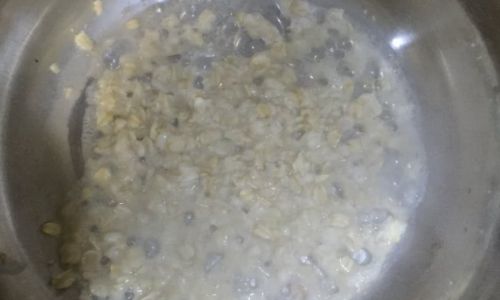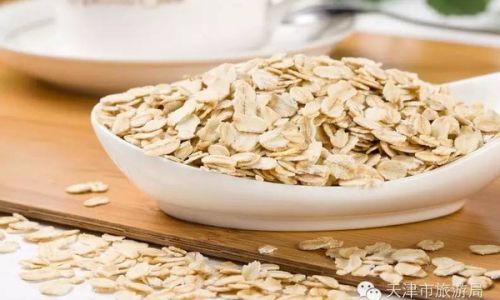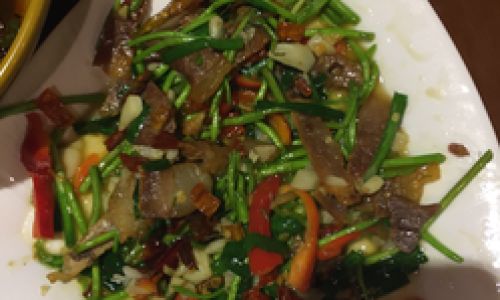Introduction
Oatmeal, a staple breakfast food enjoyed by millions worldwide, is known for its versatility, nutritional benefits, and comforting texture. Whether you prefer it creamy and smooth or chunky and hearty, one crucial aspect of preparing oatmeal is understanding how long to cook it. This guide aims to provide a comprehensive understanding of oatmeal cooking times, factors that influence them, and tips for achieving perfect results every time.
Understanding Oatmeal Types
Before diving into cooking times, it’s essential to recognize the different types of oatmeal available. Each type has unique characteristics that affect how long they need to be cooked.
-
Instant Oatmeal
- Description: Instant oatmeal is pre-cooked, dried, and often flavored.
- Cooking Time: Generally, instant oatmeal requires only hot water or milk. The package instructions usually specify a soaking time of about 1-2 minutes. Some varieties can be microwaved for even quicker preparation.
- Pros: Quick and convenient; often comes in various flavors.
- Cons: Typically contains added sugars and preservatives; may lack the texture and nutritional density of other oatmeal types.
-
Quick-Cooking Oatmeal
- Description: Quick-cooking oats are partially cooked and rolled thinner than traditional oats.
- Cooking Time: These oats cook in about 2-5 minutes on the stovetop or in the microwave.
- Pros: Faster cooking time than rolled oats; still retains some nutritional benefits.
- Cons: Slightly less fiber and nutritional content compared to steel-cut oats and rolled oats.
-
Rolled Oatmeal (Old-Fashioned Oats)

- Description: Rolled oats are whole oats that have been steamed and flattened into flakes.
- Cooking Time: Rolled oats take about 5-10 minutes to cook on the stovetop or in the microwave.
- Pros: Balanced texture and flavor; higher in fiber and nutrients.
- Cons: Slightly longer cooking time than quick-cooking oats.
-
Steel-Cut Oatmeal
- Description: Steel-cut oats are whole oat kernels that have been cut into small pieces.
- Cooking Time: These oats require the longest cooking time, typically 20-30 minutes on the stovetop or 10-15 minutes in a pressure cooker.
- Pros: Highest nutritional value; chewy, hearty texture.
- Cons: Longest cooking time; requires more attention to prevent sticking.
Factors Influencing Cooking Time
Several factors can impact how long it takes to cook oatmeal, from the type of oatmeal to the cooking method and equipment used.
-
Oatmeal Type
As discussed, different oatmeal types have varying cooking times due to their processing and texture.
-
Liquid-to-Oat Ratio
The amount of liquid (water, milk, or broth) you use affects the cooking time and final consistency. Generally, a 2:1 ratio of liquid to oats is a good starting point, but you may adjust based on personal preference.
-
Cooking Temperature

Higher temperatures can speed up the cooking process but may also increase the risk of scorching or sticking. Maintaining a gentle simmer is often ideal.
-
Cooking Equipment
- Stovetop cooking allows for more control over temperature and stirring, but microwaves and pressure cookers can significantly reduce cooking time.
- Microwaves cook unevenly, so stirring halfway through is recommended.
- Pressure cookers, such as Instant Pots, can cook steel-cut oats in half the time compared to stovetop methods.
-
Altitude
At higher altitudes, boiling points are lower, which can affect cooking times. You may need to adjust cooking times slightly and use more liquid to achieve the desired consistency.
-
Add-Ins and Toppings
Adding ingredients like fruits, nuts, seeds, or spices can change the cooking dynamics. For example, adding fresh fruit at the end prevents it from becoming mushy.
Cooking Oatmeal on the Stovetop
Stovetop cooking is a classic method that gives you control over the cooking process. Here’s a step-by-step guide for each type of oatmeal.

-
Instant Oatmeal
- Instructions:
- Measure the desired amount of instant oatmeal.
- Boil water or milk in a saucepan.
- Pour boiling liquid over the oatmeal in a bowl.
- Stir and let it sit for 1-2 minutes, following package instructions.
- Add toppings as desired.
- Instructions:
-
Quick-Cooking Oatmeal
- Instructions:
- Bring water or milk to a boil in a saucepan.
- Add quick-cooking oats, stirring constantly.
- Reduce heat to low and simmer for 2-5 minutes, stirring occasionally, until the oats are creamy and cooked to your liking.
- Remove from heat, add toppings, and serve.
- Instructions:
-
Rolled Oatmeal
- Instructions:
- In a saucepan, combine water or milk and a pinch of salt (optional).
- Bring to a boil, then add rolled oats.
- Reduce heat to low, stir, and cook for 5-10 minutes, stirring occasionally to prevent sticking.
- Remove from heat, let it sit for a minute to thicken, add toppings, and serve.
- Instructions:
-
Steel-Cut Oatmeal
- Instructions:
- Rinse steel-cut oats under cold water to remove any starch.
- In a heavy-bottomed saucepan, combine oats with water or milk (use more liquid for creamier oats).
- Bring to a boil, then reduce heat to low, cover, and simmer for 20-30 minutes, stirring occasionally to prevent sticking.
- Remove from heat, let it sit for 5 minutes, add toppings, and serve.
- Instructions:
Cooking Oatmeal in the Microwave
Microwave cooking is convenient for busy mornings. Here’s how to cook each type of oatmeal in the microwave.
-
Instant Oatmeal
- Instructions:
- Follow package instructions for microwave preparation.
- Place oatmeal in a microwave-safe bowl.
- Add the specified amount of water or milk.
- Microwave on high for 1-2 minutes, stirring halfway through.
- Add toppings and enjoy.
- Instructions:
-
Quick-Cooking Oatmeal

- Instructions:
- In a microwave-safe bowl, combine quick-cooking oats and water or milk.
- Microwave on high for 2-3 minutes, stirring halfway through.
- Let it sit for a minute, stir, add toppings, and serve.
- Instructions:
-
Rolled Oatmeal
- Instructions:
- In a microwave-safe bowl, combine rolled oats, water or milk, and a pinch of salt (optional).
- Microwave on high for 3-5 minutes, stirring halfway through.
- Let it sit for a minute, stir, add toppings, and serve.
- Instructions:
-
Steel-Cut Oatmeal
- Instructions:
- In a microwave-safe bowl, combine steel-cut oats, water or milk, and a pinch of salt (optional).
- Microwave on high for 5-7 minutes, stirring halfway through.
- Let it sit for 2-3 minutes, stir, add toppings, and serve. Note: Steel-cut oats may still be slightly chewy after microwaving; for a softer texture, consider using a pressure cooker.
- Instructions:
Cooking Oatmeal in a Pressure Cooker
Pressure cookers, especially Instant Pots, are excellent for cooking steel-cut oats quickly.
- Steel-Cut Oatmeal in a Pressure Cooker
- Instructions:
- Add steel-cut oats, water or milk, and a pinch of salt (optional) to the pressure cooker pot.
- Secure the lid and set the pressure cooker to high pressure for 4-6 minutes (depending on desired texture).
- Perform a quick pressure release.
- Stir the oats, let them sit for a minute to thicken, add toppings, and serve.
- Instructions:
Tips for Perfect Oatmeal
- Stirring: Regular stirring prevents sticking and ensures even cooking.
- Liquid Adjustment: If the oatmeal is too thick, add a bit more liquid. If it’s too thin, cook for a few more minutes uncovered.
- Flavor Enhancements: Add a pinch of salt, cinnamon, or vanilla extract to enhance flavor.
- Texture Preferences: For creamier oatmeal, use more liquid and cook for a shorter time. For a thicker, heartier texture, use less liquid and cook for longer.
- **Storage





0 comments